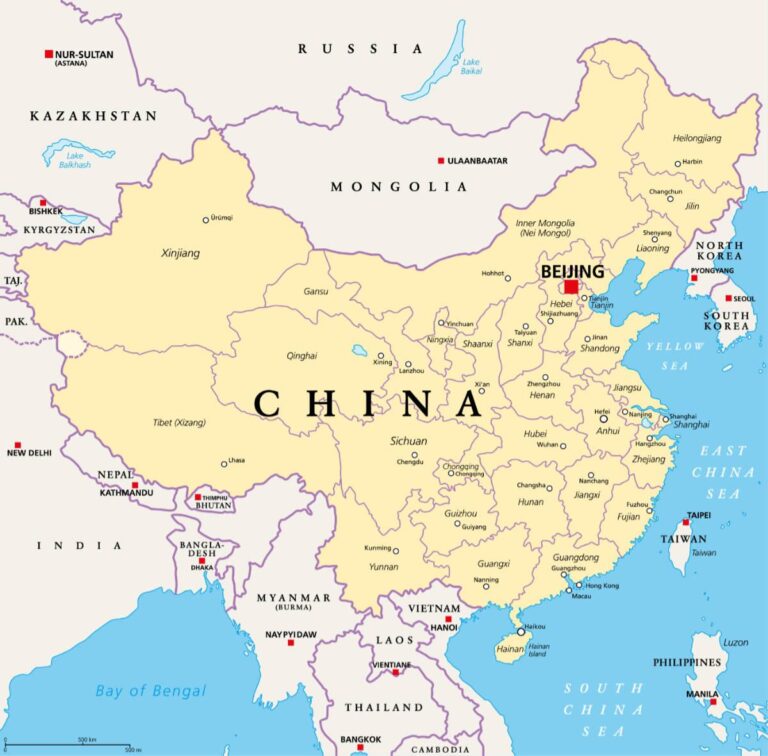The Complex Landscape of China’s Access to Advanced Semiconductor Technology
In today’s world,where technological prowess is increasingly recognized as a vital element of national security,China’s persistent acquisition of sophisticated semiconductor technology presents a multifaceted dilemma for global players. Despite the rigorous export restrictions enforced by the United States aimed at limiting Beijing’s aspirations in artificial intelligence and high-performance computing, indications reveal that China continues to procure essential Nvidia equipment through various means. This article explores the diverse strategies employed by Chinese enterprises and state entities to navigate the geopolitical terrain in their quest for Nvidia’s innovative chipsets, prompting critical discussions about the efficacy of existing policies and the future trajectory of international technological competition. As the race for tech supremacy escalates, comprehending these dynamics becomes crucial for policymakers and industry leaders alike.
China’s Tactical Approach to Securing Nvidia Technology
The intricate network of technology exchanges among nations has resulted in a continuous maneuvering around restrictions, especially amid rising geopolitical tensions.In spite of stringent U.S. export controls on semiconductor technologies, china has shown remarkable skill in acquiring Nvidia’s cutting-edge innovations through numerous tactical avenues. These methods include forming alliances with third-party firms, exploiting global supply chains, and even engaging in discreet transactions within less-regulated markets. The objective remains clear: enhancing national capabilities in artificial intelligence and high-performance computing—key sectors vital for both national security and economic advancement.
Recent analyses indicate that Chinese companies are employing an array of strategies to gain access to Nvidia’s intellectual property. They are forging strategic partnerships with international organizations that hold rights to Nvidia products, thereby creating a façade that conceals direct dealings. Additionally, there is an uptick in activities related to reverse engineering and technology replication where firms duplicate components without formal licensing agreements. As this situation evolves further,global stakeholders find themselves navigating a complex landscape filled with compliance challenges and competitive tactics requiring vigilance and innovative solutions to protect their intellectual assets.
Circumventing Export Controls: Strategies Employed by Chinese Firms
The tightening grip on export controls concerning advanced technologies has not dissuaded Chinese corporations from obtaining essential components like high-performance computing devices manufactured by Nvidia. In spite of U.S.-imposed regulations designed to restrict access to such technologies, these firms have devised a extensive strategy aimed at circumventing limitations. Their approaches range from establishing front companies located in third-party countries to forming direct collaborations with foreign entities less bound by American laws. By leveraging an extensive global supply chain network alongside local distributors while pursuing strategic acquisitions, Chinese manufacturers effectively bypass regulatory hurdles while bolstering their technological capabilities.
Additonally, sophisticated financing techniques coupled with joint ventures involving foreign partners have allowed these enterprises access necessary hardware without attracting immediate attention from regulators or competitors alike. Such maneuvers reflect not only opportunism but also signify an overarching trend towards increased ingenuity within China’s tech ecosystem as they adapt their strategies accordingly:
- Employing third-party intermediaries which obscure the final destination of acquired technology.
- pursuing investments into research initiatives, fostering domestic alternatives that lessen reliance on foreign hardware.
- navigating technology transfers, facilitated through collaboration agreements established with regions having fewer restrictions.
This evolving landscape illustrates how innovation interacts dynamically with regulation as nations adjust their tactics amidst economic constraints—ultimately reshaping market dynamics worldwide.
Global tech Supply Chain Implications: Recommendations for Enhanced Vigilance
The ongoing difficulties associated with regulating advanced semiconductor exports—especially regarding Nvidia’s offerings—reveal significant vulnerabilities within international tech supply chains.The relative ease enabling China’s continued access poses threats against efforts aimed at protecting national security while stifling innovation across competitive markets.As countries contend with escalating tensions surrounding this issue,firms must reevaluate their supply chain frameworks proactively addressing risks linked potential breaches or unintended transfers.
identified key vulnerabilities include:
- Lackluster monitoring practices concerning cross-border transactions;
- A dearth of transparency regarding secondary market sales;
- Ineffective compliance protocols among partner organizations;
toward enhancing vigilance while fortifying supply chain integrity,it is imperative industry participants adopt comprehensive risk management frameworks prioritizing thorough due diligence alongside proactive measures.investing resources into advanced tracking systems along establishing bilateral trade agreements can contribute toward building resilient networks.Moreover,fostering collaboration between governments private sector actors cybersecurity experts will be crucial developing cohesive strategies addressing dual concerns surrounding technological progress security.A practical approach may involve implementing detailed monitoring frameworks illustrated below:
| Tactic | Description |
|---|---|
| Stricter Export Regulations | Tightening rules governing sales advanced technologies targeted toward high-risk nations . |
| Supply Chain Transparency | Establishing systems tracing origins journeys tech products . |
| Compliance Partnerships | Collaborating closely ensuring adherence export regulations . |
Conclusion: Navigating Future challenges Ahead Â
The ongoing saga surrounding China’s ability secure cutting-edge innovations from Nvidia highlights complexities inherent within today’s interconnected world along geopolitical frictions influencing transfer processes.Despite facing sanctions heightened scrutiny,various pathways remain accessible allowing Chinese enterprises acquire state-of-the-art computing equipment.This scenario underscores resilience found throughout China’s burgeoning tech ecosystem whilst simultaneously presenting challenges Western governments encounter enforcing effective control measures.As competition intensifies ramifications stemming these developments likely extend beyond semiconductors impacting broader relations national security considerations years ahead.Stakeholders must maintain awareness understanding intricate tapestry defining contemporary technological landscapes moving forward.



